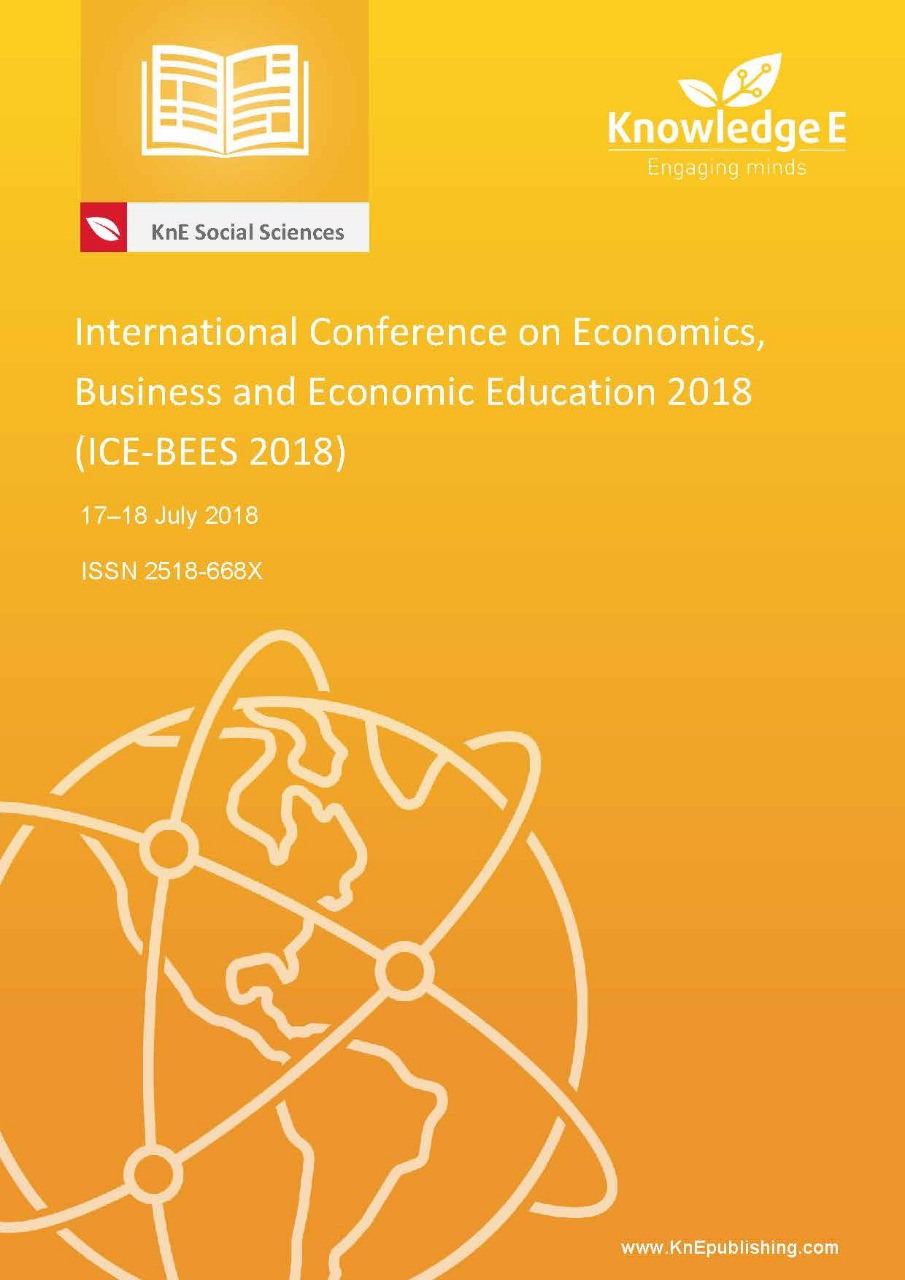Study of Management Diversity Based on Biographical Characteristics in Higher Education
DOI:
https://doi.org/10.18502/kss.v3i10.3194Abstract
This study aimed to describe the diversity based on biographical characteristics in the Department of Economic Education. Informants consisted of lecturers and faculty leaders. The research method used qualitative approach with participant observation to see natural phenomenon and social activity. Data collection techniques used observation, documentation, interviews and document analysis. Activities in data analysis were data reduction, display data, and conclusion drawing / verification. Data validity applied source and methodological triangulation. The results showed that the biographical diversity from the age aspect in the Department of Economic Education showed the ideal age distribution, but the age range was so far that the generation Y employees was fewer than the generation X and the baby boomers, which implicated the increase of the workload of generation Y. This phenomenon often became an undisclosed internal conflict. From the aspect of sex in the Department of Economic Education, the number of male employees was 23 and the number of female employees was 21. From years of service, it was 1 year to 20 years. The findings of this study indicated that age range which implicated employee workloads and sex differences were not part of discrimination.
Keywords: management, diversity, multicultural management, biographical diversity
References
Beier, M. E., & Oswald, F. L. (2012). Is cognitive ability a liability? A critique andn future research agenda on skilled performance. Journal of experimental psychology: applied, 18(4), 331.
Casselman, B. (2013). Male nurses make more money. The Wall Street Journal.
Cox, T. H., & Blake, S. (1991). Managing cultural diversity: Implications for organizational competitiveness. The Executive, 45-56.
David, F. R. (2011). Strategic Management: Concepts and Cases (13
Ellitan, L. (2004). Praktik-Praktik Pengelolaan Sumber Daya Manusia dan Keunggulan Kompetitif Berkelanjutan. Jurnal Manajemen dan Kewirausahaan (Journal of Management and Entrepreneurship), 4(2), pp-65.
Febriyanti, F. R. I. S. C. I. L. A. (2014). Hambatan komunikasi antarbudaya masyarakat suku flores dan lombok di desa bukit makmur kecamatan kaliorang kabupaten kutai timur. E-journal of Communication sciences, 2(3), 453-463.
Griffeth, R. W., Hom, P. W., & Gaertner, S. (2000). A meta-analysis of antecedents and correlates of employee turnover: Update, moderator tests, and research implications for the next millennium. Journal of management, 26(3), 463-488.
Herrmann-Pillath, C. (2006). Diversity: Managing the Open Corporation.
Joshi, A., & Roh, H. (2009). The role of context in work team diversity research: A meta-analytic review. Academy of Management Journal, 52(3), 599-627.
Kearney, E., & Gebert, D. (2009). Managing diversity and enhancing team outcomes: the promise of transformational leadership. Journal of applied psychology, 94(1), 77.
Kreitner, R., & Kinicki, A. (2014).Perilaku Organisasi, Organizational behaviour. Jakarta: Salemba Empat.
Kunze, F., Boehm, S. A., & Bruch, H. (2011). Age diversity, age discrimination climate and performance consequences—a cross organizational study. Journal of organizational behavior, 32(2), 264-290.
Lückerath-Rovers, M. (2010). A comparison of gender diversity in the corporate governance codes of France, Germany, Spain, the Netherlands and the United Kingdom.
Loden, M., & Rosener, J. B. (1991). Workforce America!: Managing employee diversity as a vital resource. McGraw-Hill.
Mangunsong, F. (2009). Faktor intrapersonal, interpersonal, dan kultural pendukung efektivitas kepemimpinan perempuan pengusaha dari empat kelompok etnis di Indonesia. Makara, Sosial Humaniora, 13(1), 19-28.
McKay, P. F., & McDaniel, M. A. (2006). A reexamination of black-white mean differences in work performance: more data, more moderators. Journal of Applied Psychology, 91(3), 538.
Mitchell Williams, S. (2001). Is intellectual capital performance and disclosure practices related?. Journal of Intellectual capital, 2(3), 192-203.
Ng, T. W., & Feldman, D. C. (2010). The relationships of age with job attitudes: a meta-analysis. Personnel Psychology, 63(3), 677-718.
Ng, T. W., & Feldman, D. C. (2010). Organizational tenure and job performance. Journal of Management, 36(5), 1220-1250.
Noviatama, L. (2015). Pengaruh Diversitas Komisaris dan Direksi terhadap Kinerja Keuangan.
Porter, M. E. (1994). Keunggulan bersaing: menciptakan dan mempertahankan kinerja unggul.
Sacco, J. M., Scheu, C. R., Ryan, A. M., & Schmitt, N. (2003). An investigation of race and sex similarity effects in interviews: a multilevel approach to relational demography. Journal of Applied Psychology, 88(5), 852.
Salgado, J. F., Anderson, N., Moscoso, S., Bertua, C., De Fruyt, F., & Rolland, J. P. (2003). A meta-analytic study of general mental ability validity for different occupations in the European community. Journal of Applied Psychology, 88(6), 1068.
Schaubroeck, J., & Lam, S. S. (2002). How similarity to peers and supervisor influences organizational advancement in different cultures. Academy of Management Journal, 45(6), 1120-1136.
Syamsuddin, A. R., & Damianti, V. S. (2006). Metode penelitian pendidikan bahasa. Published under the cooperation of Postgraduate Program of Indonesia University of Education with Remaja Rosdakarya.
Robbins, S. P., & Judge, T. (2016). Perilaku Organisasi, Organizational Behaviour (16

